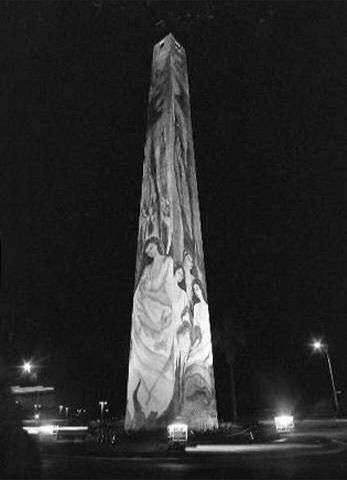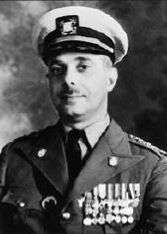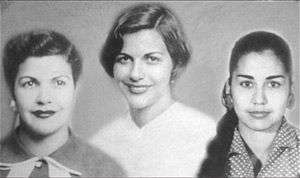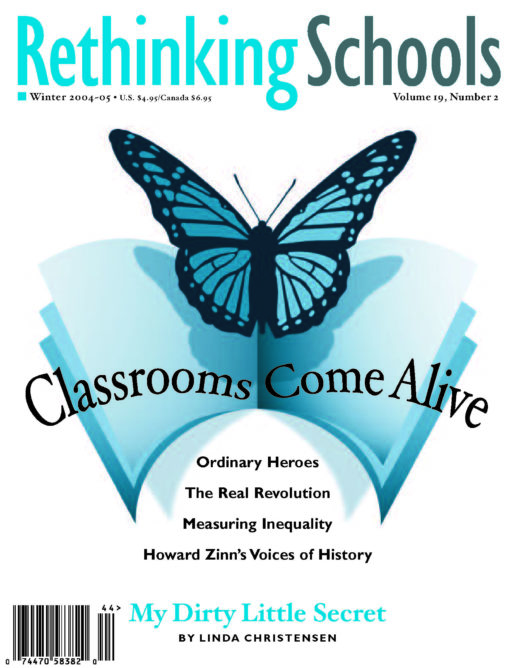The Hero’s Human Heart
Teaching Julia Alvarez's In the Time of Butterflies

The mural “A Song to Liberty” pays homage to three of the Mirabal sisters,Minerva, Patria, and Teresa (Mate’), in Santo Domingo, Dominican Republic. The mural was painted on an obelisk that was erected by dictator Rafael Leonidas Trujillo
“Uptight 1950s housewife!” Tony calls out.
“Repressed secretary,” murmurs Julia.
“School teacher. Model. Wife. Mother. Wife.” The students categorize as I write on the board. They have been looking at photographs of two 20-something women taken in the 1940s.
But they don’t know that. All they have is what they see in the photos. And I’ve asked them to try to figure out the women’s stories. The women are well-dressed, wear makeup, and their hair looks as if they just left the beauty parlor.
My students are divided into groups. Some groups have a picture of Woman A, some have a picture of Woman B. They first wrote interior monologues in the imagined voices of these women. They shared them in their groups. Now several share with the class as I ask students to list common images, jobs, and descriptions of the women.
These students in my Women and Social Issues Literature course had just finished a unit on the history of women’s rights and identity through the lens of literature. We read C. P. Gilman’s The Yellow Wallpaper, Susan Glaspell’s Trifles, and Kate Chopin’s “The Story of an Hour.” These texts, which were written in the late 1800s and early 1900s, all focus on women who are oppressed in their marriages. So, my students’ minds had been filled with stories of women being silenced and women resisting. They had no idea where we were headed, and I liked it that way.
They didn’t know the level of repression the women in the photos faced was deadly and their level of resistance revolutionary. I didn’t want them to know that the pictures I showed them were photos of Minerva and Patria Mirabal, two of the four sisters in In the Time of the Butterflies by Julia Alvarez.
Minerva and Patria were not just sisters, mothers, wives, or characters in a story. They were historical figures, heroes, armed revolutionaries involved in the underground resistance against Rafael Trujillo, the dictator who ruled the Dominican Republic from 1930-61 with the support of the U.S. government.
When I finally tell the students who the women in the photos are, they think I am teasing. When they realize I am serious, they are excited to hear that these women were fighters, had secrets, and rose up. They learn how Trujillo used secret police, torture, indefinite detention, land confiscation, and wholesale slaughter to maintain his power—and the students’ excitement turns to a desire to learn the whole story.
I start my lessons on In the Time of the Butterflies this way partly to intrigue the students and also to challenge their lurking stereotypes of women and warriors. Mostly I start this way to help students see what the novel brings home so brilliantly: These women did great things, but they were also ordinary women. We read how the Mirabal sisters helped organize and arm the June 14 Revolutionary Movement; how Patria endures her husband and son being thrown in jail, sees her home and land confiscated, and her sisters imprisoned. We also read how Minerva risks her legal career and her children, maintaining her leadership role even through months of prison, and how Maté, the youngest sister, suffers prolonged imprisonment and torture that causes a miscarriage. Eventually these three sisters are murdered, leaving the surviving sister, Dedé, to care for their children and maintain their legacy.
Through their accomplishments and their suffering, Alvarez gives testimony to the Mirabal sisters’ doubts and fears, and celebrates their common humanity. As Leela Yellesetty explains in her essay on the novel at the end of our unit, “Alvarez recognizes the tendency to dehumanize the Mirabals by making them into martyrs. This is dangerous because we are not able to relate to them as people. Then we don’t understand that what they did was real and possible.” Alvarez, in describing Dedé, echoes this concern: “But she wants them to know the living breathing women. . . . They get enough of the heroines from everyone else.”

Hero Worship
As we teach about social justice, oppression, and resistance we must be aware that students are fed a constant diet of heroes: Harriet Tubman, Gandhi, César Chavez, Rosa Parks. The stories of these heroes are meant to inspire and motivate our children to become change makers, but they can actually be disempowering. If students don’t see themselves as being fearless, persistent, and sacrificing, they may assume they are not qualified to take risks and create change. These hero stories can send the wrong message: If you don’t have the will to spend 27 years in jail like Nelson Mandela, you can’t participate in social change. In my curriculum I look for alternative models of heroism and accomplishment, where kids can see themselves and the potential for change—in themselves and in the world. I have been using In the Time of the Butterflies for several years now and the novel fits well in both language arts and social studies curricula.
I love this book for a hundred reasons: its language, its artfulness, its message, its complex characters, and its many points of entry. The major plot line is a story of power and politics. But it is also a story about women and love, motherhood and sacrifice, fear and rage, and hope and forgiveness. Students with divergent interests can find common ground in reading this book. In my untracked Women and Social Issues Literature class I have English language learners, teen mothers, honors students, and students who have never finished a novel in their entire school career. The multiple voices of my students are reflected in the multiple voices of the novel. While it is framed by the third-person narrative about Dedé, the one who survives to tell the sisters’ story, it also includes the first-person chapters of Minerva, the lawyer and the leader, Patria, the almost-nun-turned-warrior, and the diary entries of Maté, the boy-crazy shoe lover, but also whole-wide-world lover.
Getting to Know the Characters
After the picture activity, I help my students get familiar with the historical figures by holding a tea party. I assign each student one of seven characters in the novel—the four sisters, Mama, Papa, and the dictator Trujillo—with a brief description of that character and perhaps a quote. [Student handouts for this unit can be found at www.rethinkingschools.org/butterflies.] Students write interior monologues in the imagined voices of the characters. I ask them to record their characters’ backgrounds, hopes, fears, and feelings about the role of women. With a spread of some Dominican snacks (mango juice, guava paste, queso blanco, crackers—if you cannot find these at a Latino market the students are happy with cookies and juice or tea), I invite the students to mingle at the party and meet the six other characters. While they chatter and snack, I stop the festivities occasionally and invite one of them to make a toast regarding women. When it seems like all the characters have met each other, I instruct students to return to their seats and record who they met, what they learned, and what questions and predictions they have. They share with the larger class while I record on the overhead.

These tea party notes and the interior monologues form the first pages of the reader’s journals that the students use throughout the study of the novel. To keep hold of who these characters are as they grow through the book and to trace the students’ changing perceptions of the characters, I require all students to follow one of the daughters in their journals. Those who played daughters follow the ones they played in the tea party, and I assign daughters to the others. To start their journaling I ask students to read the first chapter and come up with two passages and two questions that will make for good discussion. The next day they share their quotes and questions in small groups and pick one of each to write on butcher paper and post around the room. Each student then picks one off the wall to write on. They can make connections with other texts, with their own lives, with society or history. Or they can analyze a scene, interpret a symbol, or evaluate a character’s choices. I provide a model and instructions and push the kids to go deep.
We use their quotes and questions to discuss the novel. At the end of that first discussion, I ask students to respond to something in a classmate’s journal or to another quote or question. From that point on, the journaling is more self-directed. I require roughly one entry per 25 pages of novel, in addition to some directed journal writing we do in class. We use these journal entries in class discussions and activities, and they use them when they write their essays at the end of the unit. (At the end of the unit, they turn these journal notes into silhouette charts—arranging the character descriptions and quotes on butcher-paper silhouettes and using them to come up with essay thesis statements.) It takes students a while to stop groaning about the journaling, but I have found that it yields deeper conversation, more participation, and richer essays. I emphasize that the journaling is not about remembering the plot but about making meaning. I give them an optional plot chart to record brief summaries of what happens in each chapter to keep them from lapsing into summary with the journaling.
For journaling, students don’t always get paired with the character they identify with most, but in following one character more closely they begin to notice which character they most identify with. Antonia, a school leader and activist, immediately identified with the headstrong and impulsive Minerva. Quiet and observant Whitney saw a lot of Dedé in herself. Sara, full of joy and insight, saw Maté’s childhood innocence as her source of strength. Rachele, who has her own complicated relationship with God and nature, saw Patria as her role model.
By alternating among the four sisters’ stories, Alvarez makes the book accessible to readers with wide-ranging skills. The characters have distinctive and complicated human voices. Patria, the eldest sister, may be the most religious, the noble mother, but she is also the one who loses her faith and is willing to trade her body to get her boy out of jail. Maté, the youngest, may love shoes, but during her torture and confinement she celebrates a deeper love as she recognizes the common humanity among all the prisoners, whether they be thieves or revolutionary heroes—noticing “something deeper . . . a current among us, like an invisible needle stitching us together into the glorious free nation we are becoming.”
Watching Characters Change
Reading Maté’s diary entries we watch her grow from an annoying, self-absorbed young girl into a powerful woman. But her power does not come from fearlessness, but rather from connection and solidarity. She explains, “Something big and powerful spread its wings inside me. Courage, I told myself. And this time I felt it.” Toward the end of our unit, I asked students to look through their early journal entries and find their entries about Maté. Most had described her as immature, anxious, and insecure. We talked about why and how Maté has changed. We examined her experiences in the underground, in prison, and in her relationship with Magdelena, a fellow inmate. Maté doesn’t simply reveal her courage in prison, she learns it there, as she unites with the women who share her cell.
And in our analysis of motherhood in the novel, we discuss Patria. Patria once wanted to be a nun, but she turns to armed revolt after she sees the murder of a young revolutionary as the death of one of her own. She goes from anxious mother who tries to discourage her sister’s politics to fierce revolutionary fighter, willing to risk all. The changes the characters go through and the choices they make become the focal point for many of our discussions.
I require students to record their reflections of the characters as they read, chapter by chapter, and I urge students to make connections to their lives. I’ve found that the journaling helps students notice character transformations and turns the analytical spotlight on themselves, allowing them to explore their own potential as change makers—within and without.
While Maté’s, Patria’s, and Dedé’s changes are especially noticeable, after the students have read Chapter 12, we examine the more subtle shifts of Minerva. In a lesson I call “Inside/ Outside” we do a close reading exercise, exploring notions of identity, perception, multiplicity, and mask. This activity is key to disrupting the kind of hero worship that can immobilize students. At the beginning of the lesson, students share the descriptions the other sisters have of Minerva, especially the doting Maté. Students offer quotes and adjectives as I write on the board.
Usually these capture Minerva’s strong sense of right and wrong, her impulsivity, her ability to argue, her encounters with her father and with Trujillo, her discipline in prison, her deep belief in her cause. The students always mention Minerva’s strength and bravery. I then ask a volunteer to read the passage on pages 257-262 and ask the students to notice the way Minerva describes herself. Students notice how shaken, fragile, and masked Minerva is. Minerva describes who she is on the inside and the outside after she leaves prison: “My old self was putting on quite a show.”
I use this section and Minerva’s description to have a larger discussion about self. I ask students: Does Minerva change or is she just revealing a part of herself previously unnoticed? What evidence is there in the book that she has always been afraid, has always had a mask? Do you have an inside self and an outside self? Do you change or just discover who you are?
In the Time of the Butterflies repeatedly challenges the notion of a singular coherent self. This helps me pursue one of the key goals in the course: surfacing and critiquing Hero/Villain myths that inhibit students from seeing themselves as potential “heroes”—or change makers. Patria explains this clearly when she decides not to view one of Trujillo’s men with anger and rage, but with pity and insight. “He was both angel and devil, like the rest of us.” In this way, she empowers herself to continue her struggle, seeing not immovable mountains, but a human being who might be persuaded to change.
At the end of this lesson we read other writers who touch on themes of self, layers, and masks including “Eleven” by Sandra Cisneros, “Beauty: When the Other Dancer Is the Self” by Alice Walker, and “Storm Warnings” by Adrienne Rich. I invite students to write about their own multiple selves. In this way they can further explore the many faces of heroism and perhaps entertain their own complex places in society, which might include being change makers.
The journal entries of my student Julia reveal her experience of getting to know the book’s complex characters. Initially Julia criticizes the characters and finds them annoying. But as she progresses into the book, she writes, “All of Alvarez’ characters are totally human. Butterflies is the first book where I really remember being able to identify with characters as being so complex.” And in her essay she writes:
It is nearly impossible to define each sister’s personality because they are so deeply layered. Each woman has her set of weaknesses and doubts in addition to her strengths. We too are filled with this humanness. Within each of us there resides at least fifty other people, making up who we are. In the end it is not obvious bravery that should be the measure of anyone’s strength, but their humanness.
As students watch the insecure Maté become brave and admirable, and the “courageous” Minerva admit her fear, many discuss the need to accept and honor their human frailties. Rachel explains in her essay at the end of the unit, “No one would ever suggest that Minerva wasn’t a heroine, but they seem to forget she was also just human.” Rachel attributes Minerva’s actions not to fearlessness but “her human reactions peeking out.” Indeed Minerva must constantly convince her sisters she is also afraid. When Dedé is trying to find the will to leave her husband she tells Minerva, “I could be brave if someone were there for me every day of my life to remind me to be brave. I don’t come by it naturally,” and Minerva responds, “None of us do.”
Alvarez’ characters show us that heroes aren’t fearless; they aren’t superhuman. Alvarez in her postscript explains that writing the novel was initially driven by the question, “What gave them that special courage?” Her novel shows us first that courage is not fearlessness but acting in spite of one’s fears. Her novel also shows that their special courage comes from each other and from their story.
The Final ‘Hero’
In their earlier writing and discussion, students described Dedé as “scared, ashamed, passive, and compromising.” Yet, by the end of the novel they see Dedé as the kind of enduring hero we can relate to after she suffers loss after loss: murdered sisters, divorce, breast cancer. Dedé’s last chapter switches to first-person, and she finally comes into herself. She defines herself now as “the one who survives to tell the story.” She recognizes the importance of her role and of story itself. “We had lost hope, and we needed a story to understand what had happened to us.”
Because I want students to see the Mirabal sisters as role models, not icons, I try to use the story line to get them to think about their own places in the world today. Throughout the story Alvarez weaves a shifting symbol of eyes, shut tight at first but finally open as the characters become aware of the atrocities their government committed. This awareness leads them to question their own participation or resistance to the government. And I want my students, like the characters in the story, to finally open their eyes and ask themselves what they will do when they see injustice: Will they intervene? Speak up? Work for change?
My Women and Social Issues Literature course is about women and the power of story. But it’s also about the power of the people, ordinary people who are willing to speak out and rise up. I am always searching for ways to help my students figure out what they stand for and how they can fight for it. This novel serves as an inspiration. And despite the fact that we learn in the first few pages that three of the sisters die in their attempt to fight oppression, it is a book filled with love, hope, and humanity. Andrea Townsend, a former student, explains this in “A Human Endeavor,” the analytical essay she wrote on the novel:
Wherever there are human beings in this world, there is struggle. Something to fight against, a war to win, slaves to free. Beyond that there is myth and legend. There have always been stories illuminating our battles, and in the center of every great story there is a hero. Heroes are used to inspire greatness wherever their stories are told. But a true hero is not godlike or invincible. A true hero, one that can mobilize a people into action, is a human being like any other. One who makes mistakes, and who bears the scars of the world on her soul. Someone who we can all relate to, who helps us look inside ourselves for the strength to stand up against those who would push us down.

